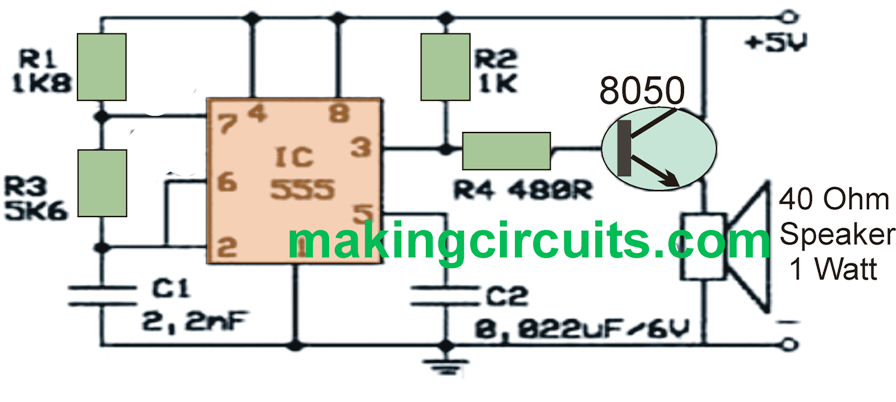Following the last circuit of electronic mosquito repellent, now you will see a rat repellent circuit, which is fully electronic and as much intriguing just like our previous article..
In fact the operating concepts of electronic mosquito repellent and mice repellent tend to be precisely identical, making use of echolocation which may be undesirable by both the rats and mosquitos. As you may know, each forms of creatures are extremely annoying when it is in home.

This electronic rat repellent circuit really is easy as it simply works with a several unique variations of components.
Therefore to suit your needs who may be presently studying, researching electronics, may make an effort to practice causes this circuit as it is regarded as less difficult for newbies.
Only the data regarding how the essential components to develop this circuit are incredibly fewer, around under 10 components.
Therefore it may very well be determined that the evaluation of the cost necessary to create this set is lower than A few dollars.
Extremely ideal for newbies who would like to start an electronic circuit for the first time.
The necessary components would be the fundamental components for example resistors, capacitors, transistors, IC 555, and output by means of the loudspeaker. Which means this may be the loudspeaker that can generate echolocation using a sweep of 50 Hz.
The tone may be the frequency most disliked by the rats, therefore rodents will not challenge get close to this unit.
You no longer need to be concerned since the emitted frequency will never affect your sleep at night. This particular audio is going to be noisy on the ears of rodents, but will not for the human hearing.
Rodents Deterrent Circuit
Amidst the unpleasant methods of controlling rodents which includes poison baiting, a more humane approach other than using predatory animals like cats and owls are producing a deafening pitch, a frequency-swept audio signal that is well above the hearing range of humans.

The signal can be modulated to sweep instead of constantly firing. The latter is not practiced because we want to avoid the mice from getting immune to the sound.
How it Works
This rodent deterrent circuit is made of a 555 timer chip that is attuned to generate a 20 to 40 kHz output signal, swept at a 50 Hz rate.
This 50-hertz signal is received from the mains through C4 and R3, which carries the modulating signal to input pin 5.
The output of the swept oscillator is directly attached to an effective ceramic horn tweeter. The high-pressure sound level that is produced by the horn tweeter makes sure to clear out the rodents from relatively large areas like attics and garages.
You can fit the entire rodent deterrent circuit inclusive of its deafening tweeter in a standard ABS enclosure.
We recommend monitoring the directivity of the loudspeaker when attaching the device in the last position.
Hello!
I also want to ask a question:
“The chip is tuned to generate an output signal of 20 to 40 kHz.” In the last 555 circuit diagram, have you set it to generate an output signal of 20 to 40 kHz? Are the parameters in the circuit fixed at this frequency? ?Or do DIY makers need to debug the final frequency themselves?
Hi,
yes, the circuit has the range of producing frequencies between 20 and 40kHz.
You can adjust R1, R2, C1 values to change the frequency and the PWM of the output.
Hi,
Re: Simple Rat Repellent Circuit
Do you know the source where to purchase 40 ohms 1 Watt speaker? I tried: DigiKey Electronics, Mouser Electronics, AA Electronics, Amazon, AliExpress, Wish, only DigiKey has 38 Ohms and 50 Ohms speakers but not 40. Please let me know which speaker I can use. Thank you.
Hi, a 38 ohm or a 50 ohm speaker can also work according to me.